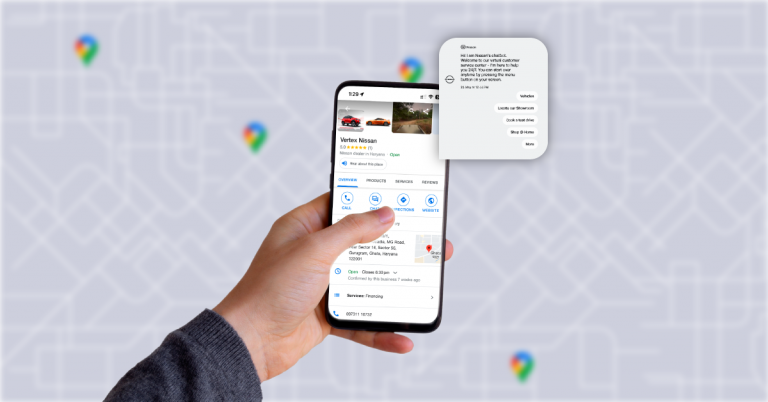Over the past decade, the landscape of communication has undergone a significant transformation. From sending emails to sending quick texts, and messenger pings and receiving faster responses, communications have become a lot more convenient. Similarly, instead of heading straight to stores, consumers today often initiate a digital message to inquire about product availability. In this changing environment, the convenience and timeliness of communication have become paramount, paving the way for the emergence of business messaging as a potent tool for boosting conversions and establishing a local presence.
Today, approximately 79% of individuals prefer interacting with brands through automated chat systems rather than traditional channels (source: Freshworks). Further, 44% of online consumers believe that having their queries answered by a live chat agent in real-time, during an online purchase is something that is of massive value (source: Freshworks).
Implementing a robust business messaging solution can catapult businesses ahead of competitors and create a more streamlined and convenient shopping experience for your consumers. And when done at the location level, business units can polish their digital identities, build stronger consumer relationships, and unlock incremental business opportunities
Let’s understand what Business Messaging is all about.
Business Messaging refers to real-time, text-based exchanges between consumers and businesses, aiming to address consumer needs promptly. This communication method serves diverse purposes, including consumer support, marketing campaigns, location-specific queries, and sales interactions. With such AI-powered real-time chats getting integrated into business listings and location-level webpages, facilitating communications and addressing various topics becomes significantly easier. Several initial-level queries can be cleared by such digital capabilities, allowing for live agents and other resources to address more complex issues.
Here are certain strategic ways in which Business Messaging makes a tangible difference to businesses, particularly to local businesses.
For local business and brand outlets, a capability such as real-time messaging is a great way to solidify its local presence. It allows them to strengthen their hold in local markets and build carve out their own digital personality, which further contributes to a better consumer experience.
It enables them to gain a comprehensive view of their local consumer base. Building a perception of consumers and their requirements, specific to geographies, becomes more productive, allowing local businesses to observe and understand consumer behaviour and intent.
Consumers seeking immediate access to information about products regarding their needs often turn to nearby physical locations. They inquire about specific details related to particular branches, such as product availability or opening hours. The intent of such behaviour is to quickly and conveniently find accurate answers. Real-time messaging humanizes the consumer’s experience offering quick answers and resolution. It establishes more credibility, assuring consumers of the value that the business unit is capable of delivering.

Modern-day digital capabilities have taken marketing to a whole new level. With real-time messaging and CRMs getting integrated, managing leads and nurturing prospect intent has become easier and a lot more productive. Business Messaging is a display of purchase intent. With meaningful engagement, maneuvering this intent towards conversion is something that every brand and local business aims at. Additionally, through contextual actions such as booking appointments or reservations, consumers display their purchase intent, helping brands strengthen their funnel.
Real-time Business Messaging is increasingly becoming a beneficial channel for businesses to solidify their local presence, offer engagement, and drive conversions. It extends beyond local efforts, enriching marketing endeavours with precision, personalization, and real-time interactions. Optimizing consumer journeys, and reducing the path to successful business outcomes, businesses with such digital capabilities thrive in the ever-growing digital ecosystem, unlocking the promise of several opportunities on the horizon.